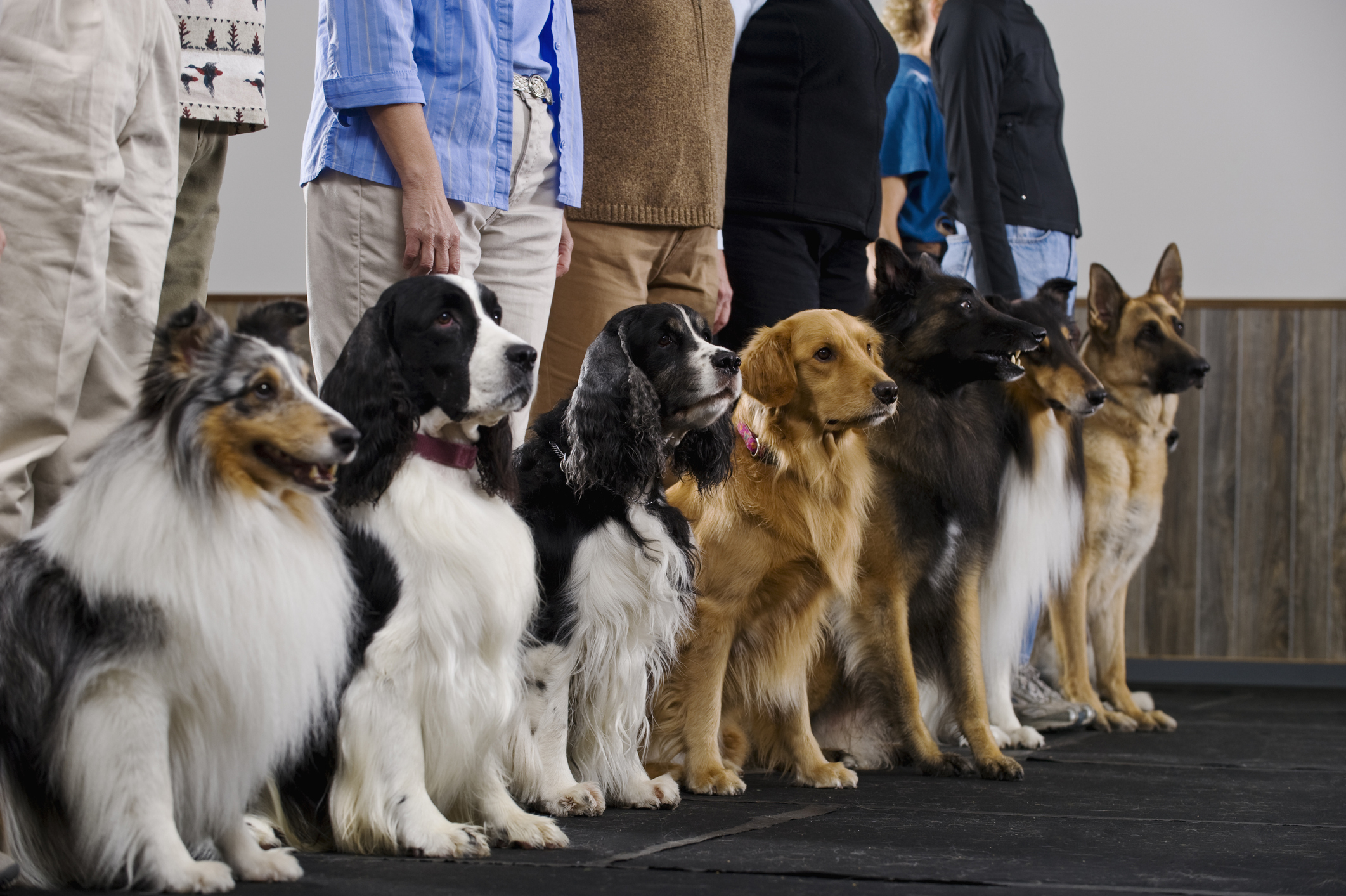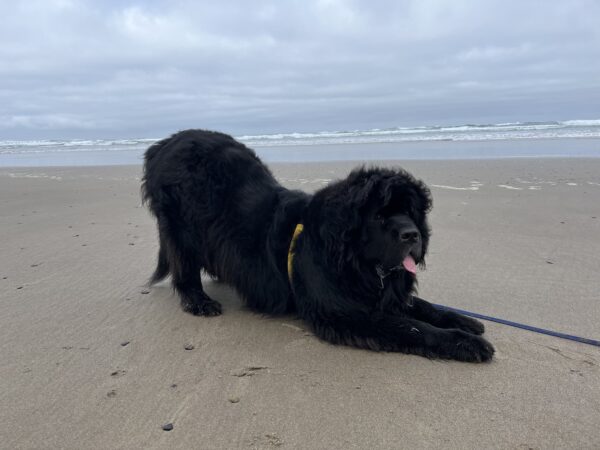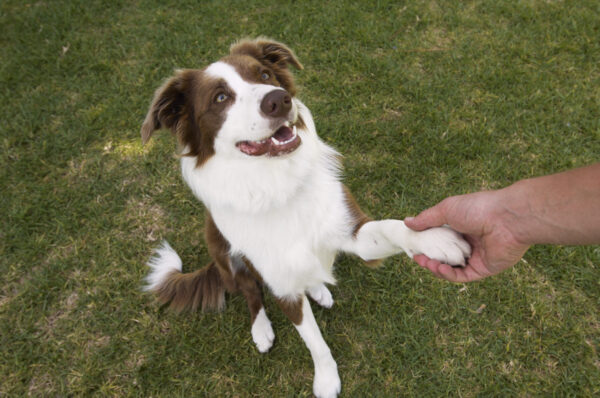1. Paying attention
Your canine companion needs to learn how to pay attention to you so that he can perform the cues you give. To teach your dog how to pay attention:
- Say your dog’s name. When he looks at you, mark the behavior by saying “yes!” and giving a small tidbit of a treat.
- If he doesn’t look at you, first show him the treat and hold it near your face as a lure. Say his name and treat and praise when he looks.
- You don’t have to hold the treat near your face forever. Once he gets the idea that looking at you is desired, just say his name and praise and treat.
- When he understands that looking at you is rewarding, add a “look” or “watch” cue after his name.
2. Recall
Recall is coming to you when called. A reliable recall can literally save his life! To teach your dog recall:
- In the beginning, show him a high-value treat as a lure. A small piece of meat or cheese or a purchased treat that your dog can’t resist can lure even reluctant dogs.
- Say his name and “come!” in a happy tone.
- When he reaches you, mark the behavior. Say “yes!” Give him three or four small treat tidbits in a row (a jackpot).
- After he starts coming reliably, stop showing the lure treat when calling him and just praise and give the reward treats when he reaches you.
- If your pup is moving too slowly toward you, take a few steps away from him when you call his name and he looks at you.
- Never have anything happen that your dog perceives as negative after he reaches you. For example, don’t clip his nails after he comes. He’s smart and won’t come the next time.
3. Sitting
Teaching him to sit on cue can solve some other behavior issues, such as jumping. To teach your dog how to sit:
- Hold a treat just above his nose and slowly move it rearward toward the back of his head. When his posterior touches the floor, calmly say “yes” and give him his treat.
- If he jumps for the treat, you’re probably holding it too high, he’s too excited or he hasn’t been sufficiently exercised.
4. Lying down
This behavior can make him welcome many places, such as dining outside with you or visiting a friend. To teach your dog how to lie down:
- Have your dog sit in front of you. Then put a treat right in front of his nose and slowly move the treat straight down toward the floor, moving the treat away from him an inch or two, if necessary, when it touches the floor.
- Wait him out until he lies down.
- If he gets up or crouches, you may be moving the treat downward too quickly or he may be too energetic.
- As soon as his whole body touches the floor, calmly say “yes” and give him the reward treat.
5. Loose-lease walking
Training him to walk on a loose leash makes walks more pleasant, which leads to more frequent walks, furthers your bond and enriches his life. To teach your dog to not pull on the leash:
- Select a side that your dog will walk on — your left or right.
- Have a 6-foot leash held with some slack in the hand next to him.
- Have him sit next to you, calmly praising and rewarding him.
- Choose what your motion cue will be. Common cues are “let’s go,” “walk” or “heel.”
- Say your dog’s name and then the cue. Take a step with a treat in the hand next to him. Praise and give the treat when he remains next to you.
- Add a few more steps at a time when he remains next to you, praising and rewarding when he is by your side.
- If he starts to pull, stop and wait until he returns to you. Then start again.
- Add steps and turns when he understands what’s expected.
- Anti-pull harnesses and head halters can help teach him not to forge ahead.
6. Leave it
This is used only for items that your pup can’t have, such as the TV remote or the roast on the counter. It can potentially save his life, preventing him from needing life-saving surgery for blockages. To teach your dog to leave it, on cue:
- Hold a treat just above your dog’s nose in a closed fist and say “leave it.” Be patient.
- When he takes his nose off your fist and isn’t pawing at it, say “yes” and give him a treat from the other hand.
- Don’t give the treat he was sniffing, or he’ll learn to persist, not leave it.
- Alternatively, have your dog on a 6-foot leash and hold it where there’s just a little slack, but the leash isn’t tight.
- Place a treat about 6 feet away, well out of his reach. Make sure he sees you place it.
- Say “leave it.” Be patient. When he stops pulling toward it and there’s slack in the leash, say “yes!” and give a reward from your hand.
- He shouldn’t get the treat from the floor or he’ll learn that he can get the forbidden item you want him to leave.
- After he understands what “leave it” means, place different items down at various heights so that he’ll generalize the cue.






